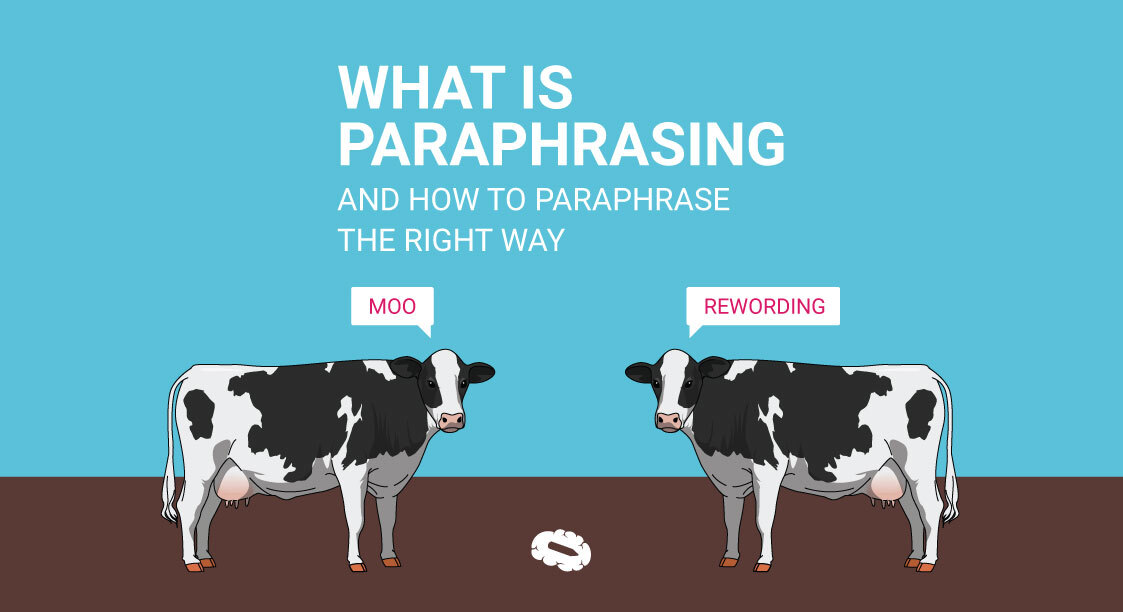At our school, college, or university level, we all have explained various concepts and rewritten them in our own words to make our teachers or professors know we understood the concept. But did you know this simple act of explaining a sentence in your own words to convey its original meaning is otherwise called paraphrasing?
Paraphrasing is synonymous with rephrasing a sentence or a paragraph and is used to disseminate the right information. Read the article to know about paraphrasing, how to paraphrase, and the difference between paraphrasing, summarizing, and quoting.
What is Paraphrasing?
Paraphrasing is explaining someone else’s work in your words without quoting them directly. In paraphrasing, the central idea is retained and the credits are given to the original author through citations.
Importance of Paraphrasing
In academic writing, paraphrasing is important as the research paper requires data and evidence that can be incorporated through research by other scientists or researchers. This shows the proof of work and builds the authority to our write-up, but when these concepts are copied from the relevant research articles, we fall into the risk of plagiarism, which is a serious academic offense.
By paraphrasing, we can incorporate others’ ideas into our essays or academic papers in our own words, according to our understanding, and this doesn’t fall under plagiarism.
- Avoid plagiarism – In paraphrasing, we need to write the concept in our own words, based on our understanding, and this eliminates the risk of plagiarism.
- Keep your research paper clear and concise – By paraphrasing, you keep your study focused on the specific concept and eliminate additional clutter with too much quoting from other papers.
- Improves readability – Paraphrasing helps to break down complex sentences into easy-to-understand lines and improves the readability of your paper.
Tips for Paraphrasing
- Use synonyms when required tro retain teh meaning of the context.
- Change the text voice from active to passive and vice-versa.
- Change the word forms and alter adjectives, verbs, and nouns.
- Change the order of the sentences or words. Start it from the middle or send the starting words at the end. But make sure it doesn’t alter the meaning.
- Merge sentences into 1-2 sentences or break complex sentences into 1-2 lines from their original source.
Note: When you are using your own previous research work, make sure to quote it or give the citation because this also falls under plagiarism.
Do’s and Don’ts in Paraphrasing
Do’s
- Write the paraphrased sentences in your own words.
- Give the complete citation.
- Use synonyms or antonyms to retain the meaning of the passage.
- Keep the keywords while paraphrasing.
Don’ts
- Do not change the central idea of the passage.
- Do not copy the whole passage.
- Do not use quotation marks while paraphrasing a passage.
How to Paraphrase: 5-Step Process for Paraphrasing
- Read the passage – Once you plan to paraphrase a paragraph or sentence, read the passage thoroughly and understand its core meaning.
- Write it in your own words – Keep the passage aside and write it in your own words. Use synonyms, change the structure of the sentences or change the words into active or passive as required.
- Cross-check the passage – Compare the original passage with the one you have written. Make sure your passage doesn’t look similar but retains the original meaning.
- Make any changes if needed – Once you have compared, look for any improvement and make the changes if needed.
- Give the whole citation – Give the complete citation of the original paragraph to avoid plagiarism.
Paraphrasing, Summarizing and Quoting
- Paraphrasing: Paraphrasing is your own version of essential information given by someone else. It is citing a source in a detailed manner without quoting the exact words of the author.
- Quoting: Quoting is replicating the same words in your research paper within the quotes. In quoting, you need to give the citation and write without making any changes in the sentences.
- Summarizing: Summarizing is giving a gist of a paragraph, essay, or research paper in a clear, concise, and coherent way.
While both paraphrasing and summarizing help you to write about your understanding in your own words, quoting refers to stating the exact sentences within quotation marks. But unlike paraphrasing, summarizing gives you an overview of the main idea.
Paraphrasing and summarizing require excellent writing skills and analytical ability to interpret different ideas and demonstrate them in your own words. Whereas in quoting, you just need to have an eye on details and give the right citation.
Over 65,000 accurate scientific figures to boost your paper’s impact
Graphical designs create a visual impact and exemplify your context better. Mind the Graph has a library of over 65,000 accurate scientific figures matching multiple topics and boosting your impact. Sign up to Mind the Graph now and explore the huge library of infographics.

Subscribe to our newsletter
Exclusive high quality content about effective visual
communication in science.





